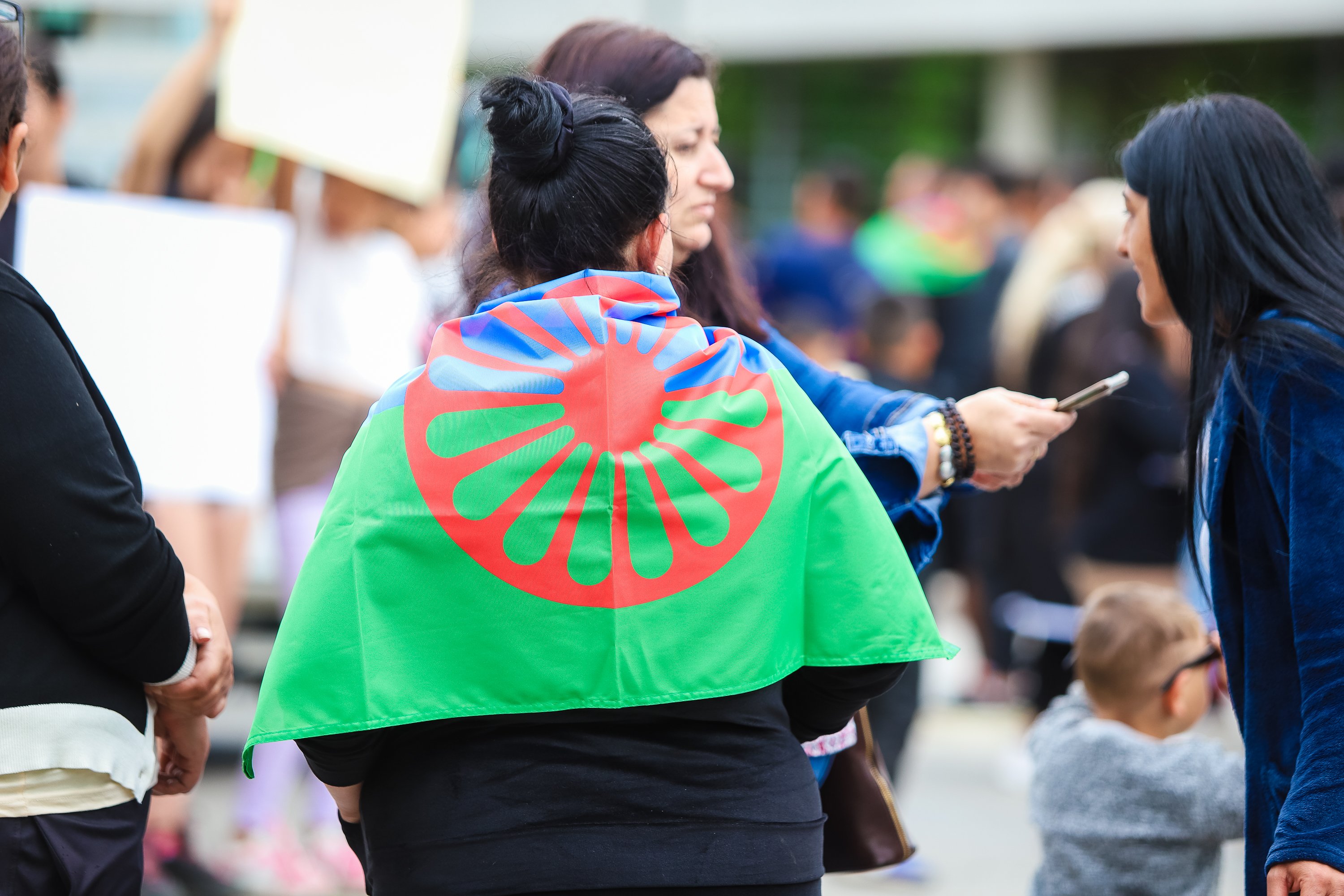Amid ongoing conflict, Ukraine's civil society is working hard to enable reforms; support independent, accurate reporting; and help thousands of displaced people.
Why did Ukraine’s Euromaidan protests begin?
In late November 2013, Ukrainians took to the streets in peaceful protest after then-president Viktor Yanukovych chose not to sign an agreement that would have integrated the country more closely with the European Union.
As the protests in Kyiv’s Independence Square, or Maidan, continued into 2014, the government began cracking down on the demonstrators. The size of the protests only grew in reaction and turned into what was termed “the revolution of dignity.” Those who remained on the Maidan risked assault, kidnapping, unlawful arrest, and loss of their jobs. On January 16, the government introduced a series of repressive laws severely restricting civil society and the right to protest. On January 22, the first protesters were killed in clashes in Kyiv; in all, over 100 mostly civilian protesters died, the majority on February 20 and 21.
On February 22, after President Yanukovych had fled the country, parliament voted to oust him and hold new elections. On May 25, Ukrainians elected Petro Poroshenko as president. After October elections, a new pro-reform coalition government came into power in December 2014.
What were the Euromaidan protests about?
The protests were more than a demand for closer EU relations; they were a rejection of injustice as a way of life and of the post-Soviet politics of corruption and nepotism. Ukrainians took to the streets to denounce the country’s endemic corruption, from the grand corruption practiced by ex-president Yanukovych and his peers, to everyday corruption and petty unfairness—like the need to bribe a teacher to get better classroom conditions for your children, a doctor to get an appointment, or the traffic police to avoid unlawful fines.
Civil society activists and NGOs played an important role in organizing this early protest movement. Ukraine’s independent media—including Ukrainska Pravda, Nashi Groshi (Our Money), and Slidstvo.info—were also pivotal in exposing the corruption that eventually brought people onto the streets in November 2013.
The brutal government crackdown that followed these initial protests galvanized Maidan supporters and encouraged more to join. This momentum, further propelled by the killings of February 20 and 21, led to the removal of ex-president Yanukovych from power.
What happened in Crimea and how has it affected people living there?
On February 27 and 28, pro-Russian gunmen seized key buildings in Crimea and took control of the Crimean Peninsula, which has an ethnic Russian majority. On March 16, in a disputed referendum that Ukraine and the West deemed illegal, a section of the Crimean population chose to secede from Ukraine. On March 18, Russian and Crimean leaders signed a deal in Moscow to join the region to Russia.
Following Russia’s annexation of Crimea, many people from the Ukrainian community and Crimean Tatar minority community, fearing repression, fled the region. Those who stayed behind have faced persecution. Other vulnerable groups have also suffered; for instance, methadone treatment for former drug users is not allowed under Russian law and was stopped after the annexation—an estimated 100 people have died in Crimea as a result.
What is happening in the East of Ukraine?
In April 2014, pro-Russian separatist activity spread to other eastern Ukrainian cities like Donetsk and Lugansk in the Donbass region. This escalated into an armed conflict between the Ukrainian government and the separatist forces of the self-declared Donetsk and Lugansk People’s Republics, whose demands range from self-rule to union with Russia.
The conflict has caused [PDF] displacement, civilian loss of life, destruction of infrastructure, and a humanitarian crisis.
- The UN estimates that between mid-April 2014 and January 2015, at least 5,244 people were killed and 11,862 wounded in the conflict.
- Some 640,000 Ukrainians have fled to other countries.
- There are more than 940,000 internally displaced people (IDPs) across Ukraine.
- Rule of law has broken down, with reports of human rights abuses in eastern Ukraine, including killing, torture, abduction for ransom, and forced labor by armed groups.
On February 15, 2015, a second ceasefire agreement—Minsk II—came into effect.
How did the Open Society Foundations react to the Euromaidan protests?
The International Renaissance Foundation, part of the Open Society family of foundations, has supported civil society in Ukraine since 1990. For 25 years, the International Renaissance Foundation has worked with civil society organizations defending human rights and justice, tackling corruption, supporting Ukrainian minorities including Tatars and Roma, pursuing health and education reform, and helping to facilitate Ukraine’s European integration.
The International Renaissance Foundation played an important role supporting civil society during the Euromaidan protests. The foundation ensured that legal aid was made available throughout the crisis to civic activists, protesters, and journalists; supplied victims of violence with medical care; enabled civil society solidarity and organization; supported channels like Hromadske TV in independent, live reporting about events on the Maidan; and documented cases of torture, beatings, and police and courts abuse.
What is the role of the Open Society Foundations today in Ukraine?
Today, the Open Society Foundations and the International Renaissance Foundation continue to work with civil society in Ukraine to achieve essential reforms in governance, law enforcement, justice, economic development, health, and education.
- We support civil society organizations like the Center for Civil Liberties, which seeks justice for crimes committed during the Euromaidan protests.
- We support think tanks that produce robust analysis on needed reforms such as tackling corruption and understanding public perceptions about European integration.
- We support independent journalism projects like StopFake.org, a fact-checking website that verifies news stories and refutes incorrect information and propaganda about events in Ukraine.
- We support organizations that defend minority rights in Ukraine, especially of those displaced by conflict, like Chiricli, which promotes Roma rights.
- We support health advocates like Patients of Ukraine that seek crucial health reforms from Ukraine’s new government.
- We support the civic coalition Justice for Peace in Donbass, which documents international crimes and human rights abuses in the conflict zone in eastern Ukraine. Ten out of thirteen members of this civic coalition are NGOs registered in the Donetsk and Luhansk regions.
- We support groups like the International HIV/AIDS Alliance that work with drug users in Crimea, where life-saving treatments of methadone and buprenorphine were abruptly taken away after Russia’s annexation.
- We support strategic advisory groups that include Ukrainian and international experts to advise the new Ukrainian government on strategic approaches to reform in key areas such as decentralization, macroeconomic reform, public administration reform, e-governance, public health, justice, and policing.
This explainer was originally published on opensocietyfoundations.org.

Roma Foundation for Europe
The latest

Roma Foundation for Europe network condemns racist remarks by Romanian minister, calls for accountability

When Bulgaria’s Streets Echo Roma’s Longstanding Reality

Slovenia’s "Šutar Law" Sets a Dangerous Precedent for Europe
Browse by category
Campaigns
Events
Facts
Press
Voices
For media inquiries:
[email protected]Sign up here so you don’t miss out on campaign updates, upcoming events and other news from the Roma Foundation for Europe and our network.
Sign up for our newsletter